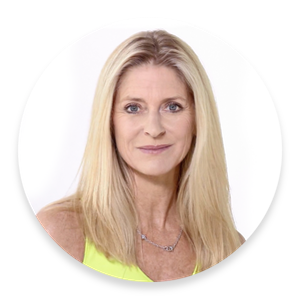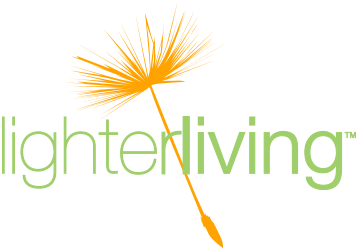Basic rules of body precision on the Reformer
Every fitness routine should function to increase mobility and flexibility of the spine, strengthen all the mobilising muscles, expand range of motion of the joints, improve posture and maximise oxygen uptake by the heart and lungs. AeroPilates uniquely attains all of those goals in a safe and fun routine that will totally change how you look, feel, and move.
When you think of reforming how you move, it is important to understand that your upper body is stabilised by your shoulder girdle, your lower body by your pelvic girdle and your core is the connection between the two. Your head sits on top and your spine runs uniformly throughout.
In order to get the most out of your AeroPilates reformer routine, it is helpful to be mindful of some of the following rules of correct body placement to prevent injury and maximise results:
1. Pelvic placement
Your pelvis is the connecting between upper and lower body. It is the central axis of your body's core. Correct placement of your pelvis is very important in determining good posture and supporting your spine.
As you know your pelvis is designed to tilt and turn. It tilts forward by lengthening your abdominal muscles and shortening your lower back muscles forming an arch in your lower back. This is called an anterior pelvic tilt and is used in back extension exercises like the Down Stretch. It is important to avoid this position in exercises like the Hundred, that call for a posterior tilt or neutral pelvis. In a posterior pelvic tilt, your pelvis tilts backwards by lengthening your lower back muscles and shortening your abdominals to flatten your lower back.
Because the abdominal muscles can more easily maintain a contraction in this shortened position, we will sometimes use a posterior tilt as we are learning exercises like the Hundred until the abdominal muscles gain enough strength to maintain a contraction and support the spine in neutral. This position is also used in exercises like Roll Down and Frog.
In the middle of these two tilts is a balancing point where abdominal and back muscles have an equal amount of pull and your lower back is equally supported from the front and back. In AeroPilates this is referred to as neutral pelvis and is the most preferred position to maintain ideal posture when walking, standing, and sitting, and is used in exercises like the Warm-Up Footwork and Straps.
When you find an exercise too challenging to maintain neutral pelvis, then lengthen your lower back and imprint your pelvis. If this is still too difficult, then replace it with an easier modification or try the exercise later once you have built the core strength to maintain the correct position. When performing all lower body movements think of lengthening your neck and pushing the tailbone down and away.
To identify these three pelvic positions, lie on your back with your knees bent and feet resting on the floor about hips width apart. Find your hip bones with the palm of your hand and find your pubic bone with your finger tips. In this position the hands make a triangle between the top and bottom of the pelvis. In an anterior tilt, the tip of the triangle will point down. When the pelvis is in a posterior tilt, the triangle will point up. In this position the abdominal muscles are shortened, or contracted. In neutral, the top and bottom of your triangle will be level. Neutral is the ideal posture for standing, walking and many sports activities.
2. Shoulder Placement
Your shoulder blades are very mobile and lie on the back of your ribcage, playing a dominate role in determining movement at the shoulder joint. They can protract or slide forward toward your arm pits, retract or slide together towards your spine, elevate sliding up towards your ears and depress or slide down towards your waist.
Like the pelvis, your shoulder joint also has a neutral placement. This is the place where the muscles around the joint are in balance and the shoulder has the healthiest range of motion. When your shoulder blades or scapula are resting on the ribcage in neutral, your neck muscles are relaxed and your shoulders are wide, neither rounding forward nor lifting toward the ears. When performing all Upper Body exercises become aware of the work being done behind your shoulder blades; this will insure correct stability of the mid bar k and empty the correct muscles, taking the burden off the shoulders.
3. Rib Cage Placement
When challenging your core abdominal muscles during exercises where your arms are over your head, it is very common for the rib cage to pop out. In AeroPilates, we encourage an abdominal connection between the rib cage and the pelvis. In other words, it is important to maintain a constant distance between the hip bone and the lowest rib. Be careful never to allow your lowest rib to lift, protrude or flare.
4. Head placement
Your head remains a natural extension of your spine and In its neutral posture, your cervical spine or neck should maintain its natural curve. When performing exercises like Roll Down and the Hundred your chin should gently nod forward, leaving approximately a fist worth of space between the chin and the throat. Be careful not to jam the chin in to the neck or to leave it behind when the upper back flexes.
5. Breath
Each AeroPilates exercise has a corresponding breath pattern. The breath is a vital part of the AeroPilates system, and good breathing oxygenates the system allowing your body and mind to work more efficiently. It also relieves stress, elevates your energy and plays an important role in flexion (bending forward) and extension (bending back), of your spine. In all AeroPilates exercises you will want to take deep, full breaths, inhaling through your nose and exhaling through your mouth. This circulates oxygen through all four lobes of your lungs, and expands and contracts your diaphragm fully. To learn this breath pattern, fold your upper body over your legs in a Child’s Pose and place both hands on the back of your ribcage. Take a deep breath in though your noses, feeling the breath expand your rib cage from all sides like a balloon filling with air. Then exhale through your mouth, and feel your rib cage deflate under your hands like a balloon that is releasing air. Repeat this breath two more times with a special focus on feeling the breath expand in to the sides and back of the ribcage where your hands are resting. The general rule of thumb in AeroPilates is that you inhale when your body expands and extends, and you exhale when your body contracts and flexes. Also you should exhale at the time of most exertion. This can change in an exercise as you change the resistance; eg in Elephant on heavy tension you exhale as the hamstrings push the platform back and inhale on the return but on light tension you inhale on the way out and exhale on the return.
7. The Core
In AeroPilates, the Core refers to the area of the body between the ribs and the pelvis. This is the axis of the body, where the upper and lower bodies intersect and where we derive the most stability and power for our movement. It can be seen as the origin or the hub for the musculoskeletal system. The goal in AeroPilates is to sequence our movements so that they derive from this place of power and stability and branch outward. Through this technique, we are able to send the strength found in the core outward through the spine, arms and legs creating power, stability and balance in the whole body.
On the reformer, the cords act as abdominal muscles which are the primary core stabilising muscles of the body. More cords will therefore work the major muscles of the arms and legs, and fewer cords will emphasise the core.
8. Controlled In and Out Movement
The benefits of each AeroPilates exercise are maximised through slow steady movements. Improvements are gained through attention to form. Movements should not be rushed or compromised by substituting momentum for proper technique. Joseph Pilates once said that "a few well designed movements properly performed in a balanced sequence are worth hours of sloppy calisthenics or forced contortions".
 written by Marjolein Brugman
written by Marjolein Brugman
Marjolein Brugman is the founder of lighterliving and Aeropilates. “lighterliving is a movement and lifestyle choice we can all make. Let’s make it simple – make one decision a day to be better and watch the small steps lead to big changes. Eat smart, stay active, and you’ll live to feel a lighter life."

